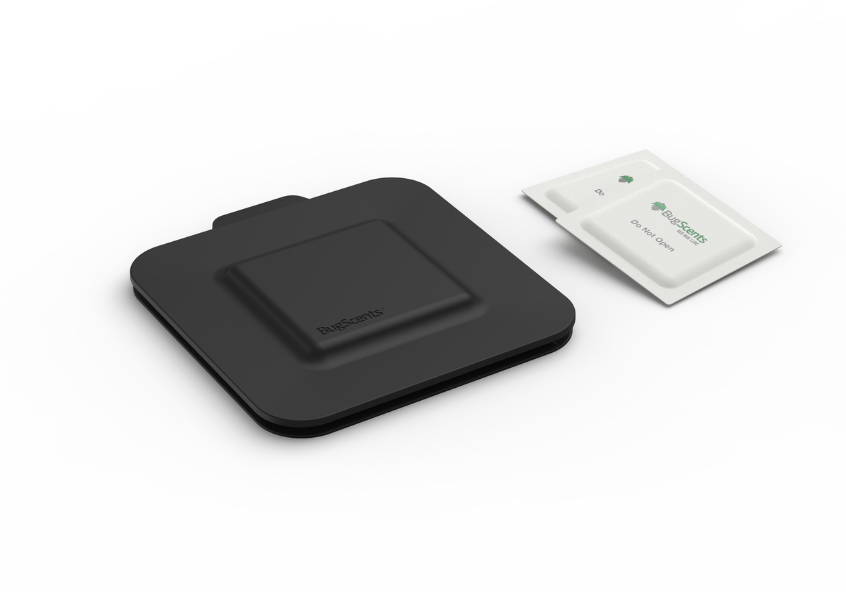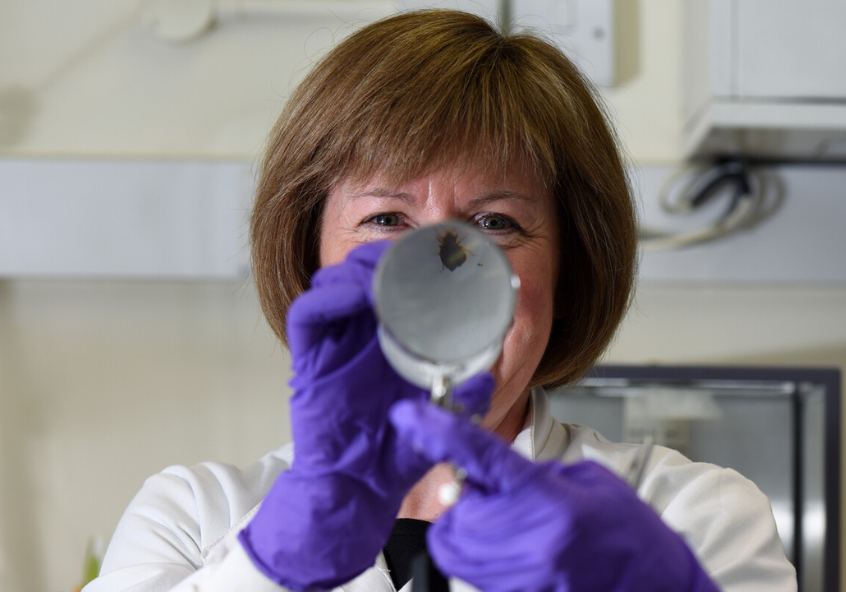LSHTM spinout team combining artificial intelligence with insect biology to develop pioneering technology for pest control and disease diagnostics
Scientists at London School of Hygiene & Tropical Medicine (LSHTM) spinout Arctech Innovation have used their in-depth knowledge of insects, chemistry and odour to develop a new trap for bed bugs.
The BugScents™ Sentry device is the culmination of over a decade of collaborative research and development led by company co-founders Professor James Logan and Professor Mary Cameron. They set up the enterprise while working together at LSHTM as medical entomologists focused on tackling vector-borne disease.
Bed bug bites can cause reactions ranging from minor irritation to severe allergic hypersensitivity. They are a pest of significant public health importance and a growing global economic problem, infesting homes, hotels and transport.
During hundreds of experiments in the labs at LSHTM and Arctech Innovation's 'Pest Pod' testing facility, the team studied bed bug behaviour and the chemicals in their scent to create new solutions for pest control and public health.
The work on bed bugs was a catalyst to developing an odour discovery platform, Semeion IQ®, which now uses artificial intelligence (AI), combined with analytical chemistry and insect olfaction (sense of smell), to speed up their ability to detect and decode scent patterns. This is enabling them to adapt the technology to sniff out other pests beyond bed bugs, or smell changes in human body odour which may indicate they have a disease, like malaria.
Professor Logan, CEO of Arctech Innovation, said: "For every one of us, there are almost a billion insects that transmit more than 17% of infectious diseases. Many insects, such as bed bugs and mosquitoes are increasing and spreading their range because of climate change and resistance. So that means that we're living in their world. We'll never get rid of every pest and we'll never get rid of every disease. We need to live smarter in a bug's world."
The BugScents™ Sentry trap works by luring bed bugs with the scent in the chemical substance, known as an aggregation pheromone, which they release naturally to signal to other bed bugs to gather together. A professional version of the trap, BugScents™ Sentry Pro, has also been launched for pest controllers, designed for year-long use as a monitoring solution.
The reusable trap is slimline so it can be placed under a mattress, with specially-designed channels which act like corridors to take advantage of the fact bed bugs are thigmotactic (they like to follow an edge). Once encouraged inside, they stick to the sticky roof. The trap allows individuals or businesses, such as hotels, to check if they have an infestation and need to call in pest control professionals, or to give peace of mind.

It all began around 2010, when Professor Logan and Professor Cameron teamed up with colleagues to solve a bed bug mystery - what caused them to gather together in groups?
Professor Cameron, Professor of Medical Entomology at LSHTM, said: "The hypothesis was that bed bugs produce a pheromone and attract each other. What you tend to find in infestations in houses or hotel rooms is that bed bugs aggregate - you get clumps of them together - so that implies there's a mechanism which causes that. In the insect world usually it's down to a pheromone. So that gave us a clue that a pheromone was likely to be involved in the aggregation, but it hadn't been identified."

Rothamsted Research-based colleague Emma Weeks was awarded funding to study a PhD at LSHTM to find out. She discovered - after multiple experiments involving fitting microelectrodes to the bed bugs' antennae and measuring their responses - that the answer was a pheromone in their poo.
With this breakthrough, Professors Logan and Cameron realised the potential for working with industry to develop ideas for translating this knowledge into commercial products, for example to lure bed bugs into a trap.
Thanks to financial support including a catalyst grant from LSHTM, the researchers did market research to assess if it was commercially viable, and employed an early career researcher for scientific work to reduce the number of compounds down from the 15 or so found in the relevant attractant pheromone to just two.
Pheromones are volatile, so in order for their new lure extract to work for a trap, the team needed to make sure it released just the right amount of chemical odour and would last long enough. Their solution was to develop a unique formulation and put it into tiny beads. They filed a patent on the two chemicals in a specific ratio that make up the key part of the pheromone.
This was the moment when Professor Logan and Professor Cameron spun out the project as Vecotech to develop it commercially. In 2021, Vecotech merged with ARCTEC, another LSHTM spinout, to form Arctech Innovation.
While happy with their lure recipe, Professor Logan said the team discovered there were problems with some of the existing bed bug traps as it was a challenge to get the insects to go inside.
So the next step was to develop a new trap design, exploiting everything they had discovered about bed bug biology and odour technology.
Explaining the research and development behind the BugScents™ Sentry trap, Professor Logan said: "Bed bugs like to follow an edge - they are thigmotactic. They feel safe when they're against an edge. So they follow the seam of a mattress or the edge of a skirting board.
"We exploited that in the trap by creating channels all around the edge of the base so as soon as the bed bug gets there it feels the edge and follows it inside. There's a slight ramp up into the middle so the roof narrows above them. Instead of putting glue on the bottom which means the bed bugs are likely to turn back as soon as they feel it on their feet, our trap has a sticky ceiling so the bed bugs get their backs stuck there and can't escape."
Through the opportunities offered by commercialisation, the scientists have also been able to dramatically speed up the process of detecting and decoding scents by developing an odour discovery platform called Semeion IQ®.
Professor Logan said: "Our first product came from academic research. That allowed us to develop Semeion IQ® which allows us to identify odour signatures really quickly.
"We can now do in a matter of weeks what we were doing in a couple of years before. We combine the analytical chemistry with the insects as biosensors and then we use AI as the insect's brain to help us decode what's going on.
"We've built a digital odour library so we now know the odour associated with other pests such as cockroaches, silverfish, clothes moths, carpet beetles, and many others, as well as bed bugs.
"With this process we can not only decode the odour, we can also build sensors that detect that odour - tiny gas sensors that can sniff out pretty much anything in the air with algorithms powered by AI.
"We're essentially building machines that do the job of the insect's nose. Over the coming months we'll be putting sensors inside the trap that smell if a bed bug or another pest is present, and send an alert to a phone or computer to tell you there's an infestation alert and where it is. For example, in a hotel with 500 bedrooms you'll know where is infested as soon as it happens, so it can be dealt with rapidly."
Arctech Innovation is now using the same odour-based technology to develop a handheld device for the detection of diseases such as malaria and dengue through changes in human body scent. Proof of concept trials suggest the device can detect malaria with accuracy above 95% and the product is now advancing to validation.
Professor Logan said: "We started with the humble bed bug. But that's led us to develop and explore a range of other solutions.
"It could be world-changing technology, and it was inspired by nature, inspired by bed bugs and based on the work we've done in academic research and through commercialisation.
"Investing in innovation has not only led to useful products on the market but all these other applications which could be life changing.
"There were lots of challenges along the way. As well as having to raise money, we also had to build a supply chain, logistics, sales teams. But I never doubted the science and feasibility; I've always believed in it."






